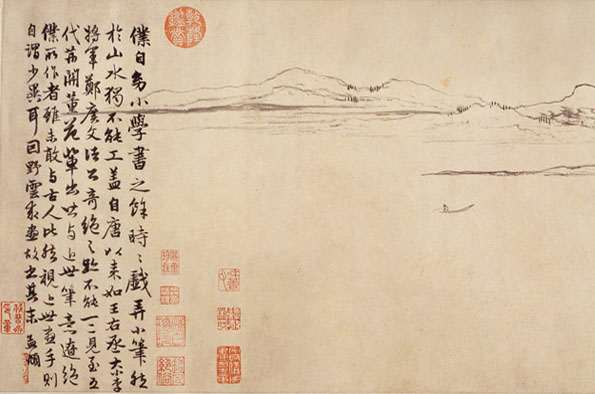
How to appreciate Chinese painting
Add this event to my calendar
Click on "Create a calendar file" and your browser will download a .ics file for this event.
Microsoft Outlook: Download the file, double-click it to open it in Outlook, then click on "Save & Close" to save it to your calendar. If that doesn't work go into Outlook, click on the File tab, then on Open & Export, then Open Calendar. Select your .ics file then click on "Save & Close".
Google Calendar: download the file, then go into your calendar. On the left where it says "Other calendars" click on the arrow icon and then click on Import calendar. Click on Browse and select the .ics file, then click on Import.
Apple Calendar: The file may open automatically with an option to save it to your calendar. If not, download the file, then you can either drag it to Calendar or import the file by going to File >Import > Import and choosing the .ics file.
Some scholars such as Ronald Egan think that Xie He intended his notion of qiyun (spirit consonance) to apply only to figure painting in his time, and it was the 10th century master and theorist Jing Hao’s later application of qiyun to landscape painting that brings a new sense of landscape painting as a living and dynamic entity.
In this lecture, we will learn to appreciate Chinese painting from understanding the notion of qiyun initially applied in the context of figure painting as dominant genre and later developed in the context of landscape painting.
We will see why landscape becomes a popular subject-matter in the Song and Yuan Dynasties, how landscape paintings were typically produced, who they were for, and why the allegedly revolutionary replacement of Song paintings’ realism by Yuan paintings’ expressionism endorsed by some influential Anglophone art historians such as Max Loehr, James Cahill and Wen Fong is questionable.
This lecture will show that the application of qiyun in landscape painting from the 10th century to the 14th century reflects landscapists’, theorists’ and connoisseurs’ conception of natural existence as processual formulated through a synthesis of Confucianism and Daoism. Moreover, we will see that the moral dimension involved in the notion of qiyun in the context of landscape painting reflects how artists conceive of the relationship between ethics and aesthetics with respect to the natural world.
